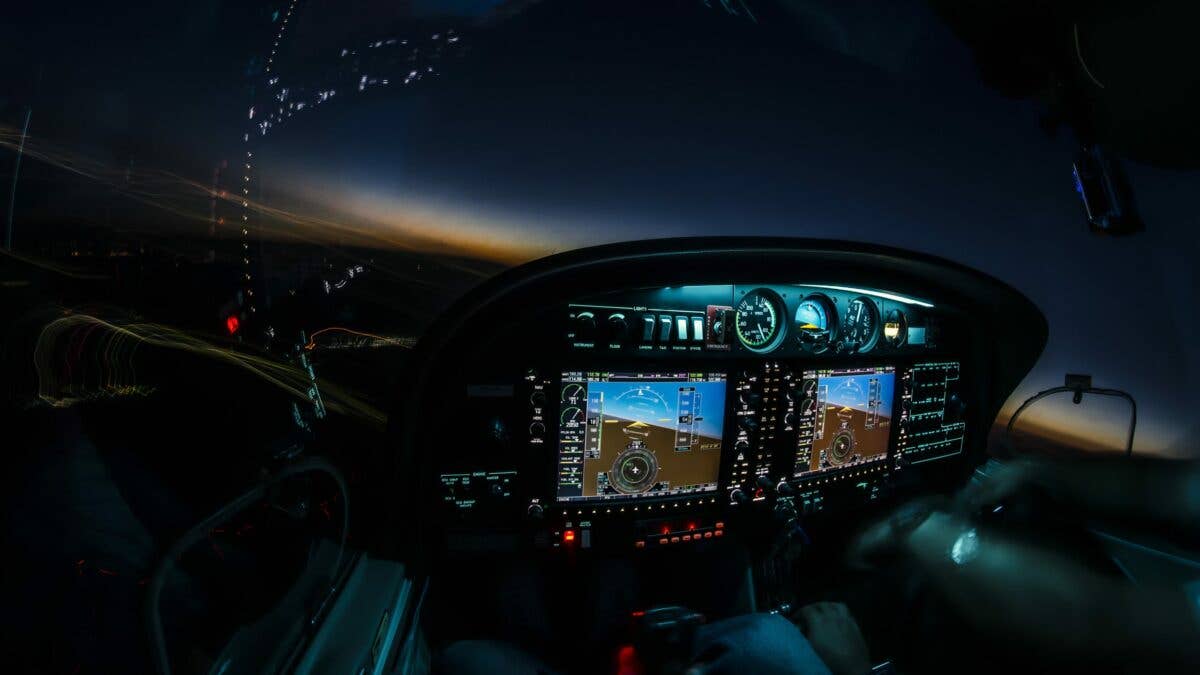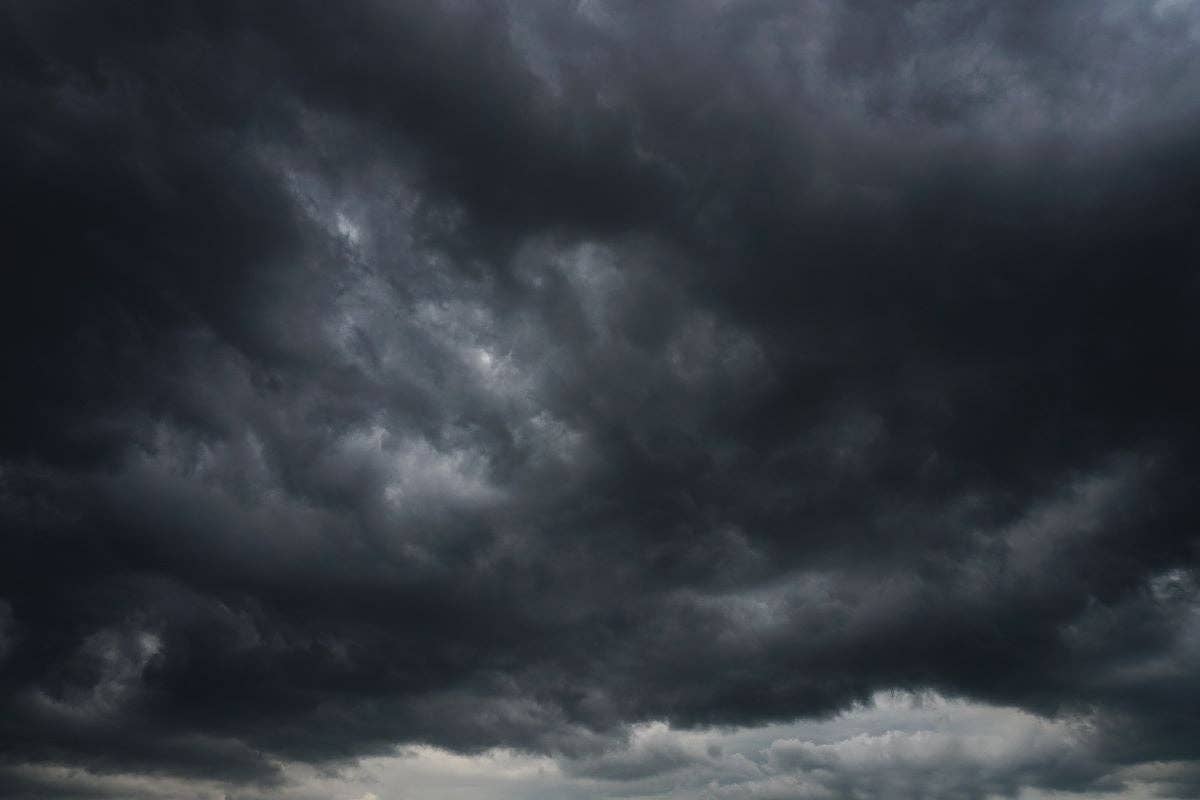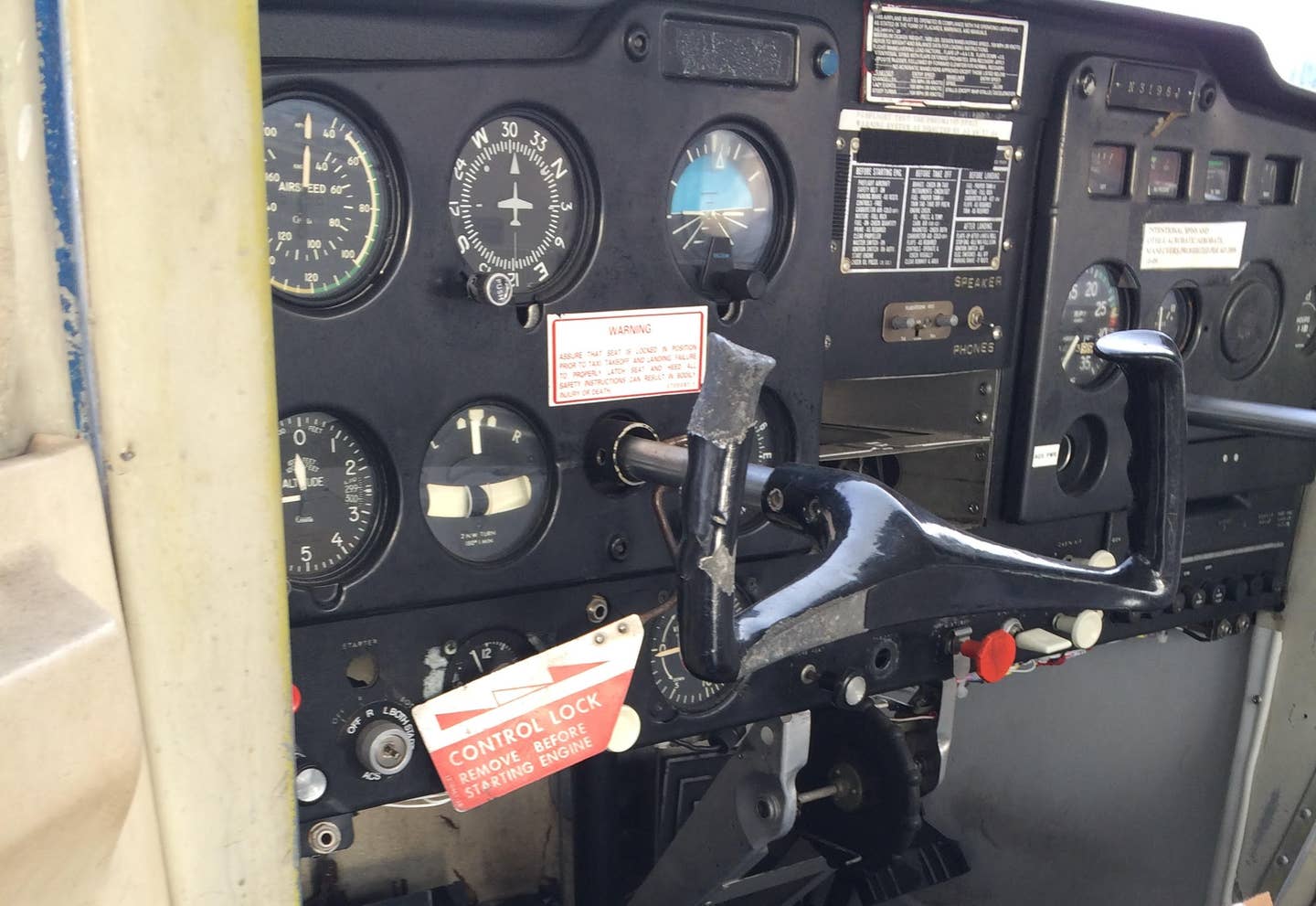Things a CFI Wants You to Know: Respect the Night
As the days get shorter and shorter, CFI Michael Wildes gives you ways to make flying at night easier—and safer.

Flying at night presents its own set of challenges that you might not be used to. [Credit: Adobe Stock]
When I began flight instructing, where I taught scheduled instructors by time of day, and I drew the night shift. So for a year and half before my situation changed, I had to learn both how to become a good instructor and handle the nuances of night flight. So learning to be comfortable flying in the dark quickly became a priority for me.
Realistically, there should be no reason for us to be afraid of flying at night, but I can see how the lack of usual visual cues can affect a number of pilots. Fortunately, I was able to adjust, loved it even, so that when I was reassigned a day shift later, I really missed it.
With the recent time change, we are that time of year again when the days are shorter, and many pilots who haven’t flown at night for a long time, might find themselves chasing sunsets to get home. Here are some things to consider:
Pilot: Are you ready?
While the time adjustment changes the sunrise/sunset schedule, unfortunately, your personal itinerary might not change. All of a sudden, you might find yourself in darkness yelling “Clear prop!” and trying to decipher if that light in the distance is a lighthouse or a rotating beacon.
You certainly don’t want to be in this position without a bit of planning, especially if you’re flying solo.
But you don’t have to make your first night flight in a long time feel like it’s your first night flight in a long time. If you have the means to do it, ease yourself in by doing a series of flights days before that begin as the day closes. That way, you get used to the lower visibility without the shock of starting out in pitch dark. For once, go gentle into the night. That’ll make it easier to be ready for a later trip in terms of recency, currency, and even psyche.
Aircraft
Given that the lack of light causes the most anxiety for pilots, don’t add to it. Ensure that your aircraft is sufficiently equipped for your night flight. Recall that there are different lighting requirements for day and night flights, and a bad time to find out that you don’t have a working landing light, for example, would be when you’re deciding if you should flare to land now or not.
Don’t limit this consideration to lights. Do you have the correct navigation and communication instruments? Are you meeting the night fuel requirements? Can you operate at an altitude optimal for the trip? Don’t aim to be minimally compliant here. If you’re flying solo, having things that can augment your decision making is worth every penny.
Another thing I would discuss with my students is their emergency contingency plans and how they would specifically deal with a situation. In a training environment, a student’s mind is already primed with answers, and they can more easily come up with them. However, if you are an independent operator, can you say the same for yourself?
It’s not that things are more likely to go wrong at night. Instead, we need to pay attention to our state of readiness—and how unforgiving each decision can be when you don’t have the same elements to help you that you would in the daytime. If you make a habit to review abnormal and emergency checklists, you’re less likely to be startled by mechanical inconveniences, even if you have to make a forced landing as a worst case scenario.
Simply put, knowing your airplane is one of the ultimate preparations you can make for flying at night.
enVironment
Nighttime weather might be the ultimate decision driver, and aside from zigzagging through thunderstorms like I had to when instructing in Florida, pilots also have to deal with two other extremes: cold, and instrument meteorological conditions. The good extreme is a full-moon night, when the sky is brighter than New Year’s Eve, and there are hardly any clouds. But that’s a lottery that escapes most of us. So, we have to consider other conditions that are more likely.
- MORE IN TRAINING: Learn to Fly | Pilot Proficiency
Remember to bring a coat. As we enter the winter season and temperatures go from warm to really cold, don’t find yourself unfocused because you didn’t plan for it.
Another challenge with cold weather? Frost and icing—there’s a higher potential for them, so you need to steer clear, if possible. Even for airplanes equipped with icing prevention and de-icing systems, having to traverse such inclement weather increases pilot workload. I would be hard-pressed to think of a trip that is a must-go if you have to put yourself in those conditions.
Another consideration that pilots sometimes take for granted is route planning. While GPS direct is the optimal way to travel, consider flying as close as possible to populated areas. If the trip includes flying over water or unpopulated areas with the chance of losing your visual reference to the horizon, be prepared to fly IFR.
External Pressures
Alas, the final consideration is possibly the biggest factor affecting the safe outcome for a night flight.
I know how it is. You really don’t want to go home. On a good day, if the skies are clear, even if you’ve been flying all day—especially after required fuel stops—it’s enticing to complete that final leg and skip the hotel bill. Perhaps you’ve flown the route many times before. On top of that, you promised someone to be somewhere at some point.
I’ve been there before, and not getting home as planned is a drag. Right?
If you haven’t flown at night for a long time, it’s tempting to want to play hero and rise to the occasion, but your past performance is no guarantee of the success you’ll need in that moment, especially if you lack recency of experience, currency in the airplane, or you’re just plain tired.
External pressures aren’t the exception in this industry—they are the rule. No trip is an absolute go.
Considering everything mentioned above, if you aren’t ready for a night trip, your ultimate hedge is to try another day.

Subscribe to Our Newsletter
Get the latest FLYING stories delivered directly to your inbox






